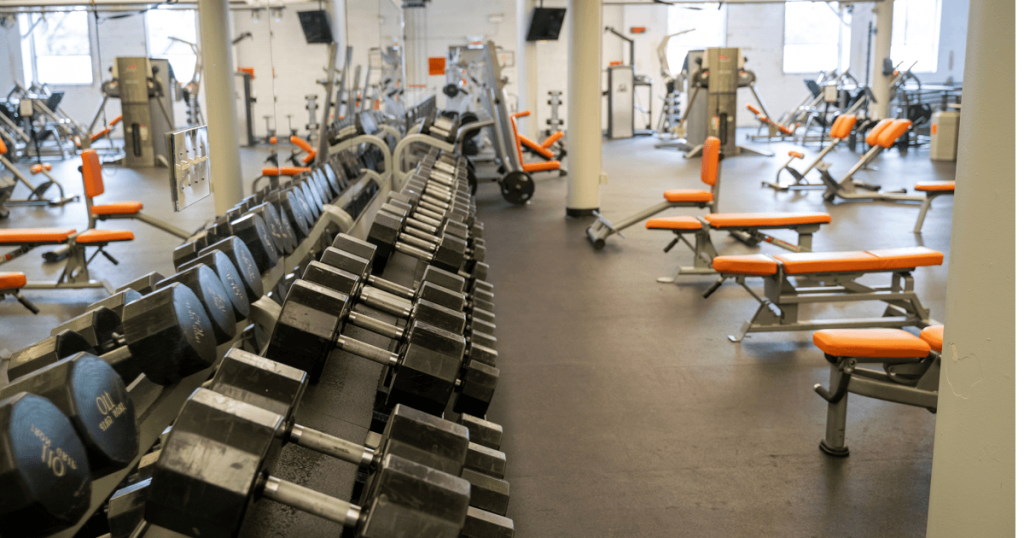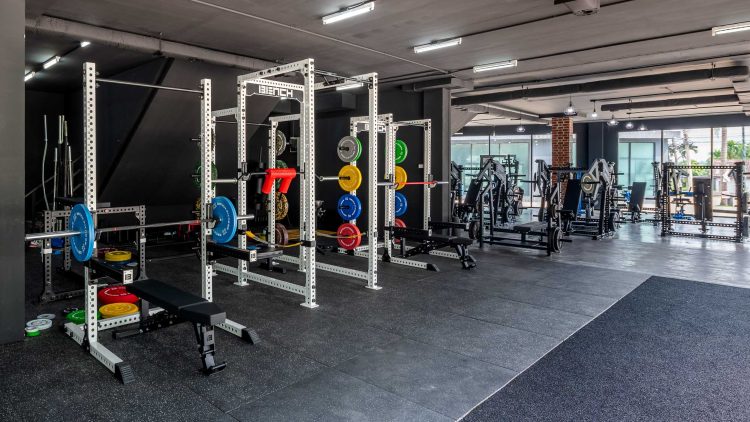Introduction
In recent years, fitness has become an integral part of daily life for many people around the world. Whether it’s achieving weight loss goals, improving overall health, building strength, or simply staying active, the need for fitness equipment has grown significantly. As more people look to work out at home or integrate fitness into their daily routine, the demand for home gym equipment has surged.
Choosing the right fitness equipment is a crucial decision, as it can influence your motivation, workout quality, and long-term success. With the vast array of options available, it can be overwhelming to select the equipment that best meets your needs. The decision-making process involves several key factors, such as budget, space constraints, type of workout, durability, and technology integration. This article aims to explore the most important considerations when selecting fitness equipment for your home gym or fitness routine.
1. Assessing Your Fitness Goals
1.1 Define Your Fitness Objectives
Before diving into the world of fitness equipment, the first step is to clearly define your fitness goals. Your goals will significantly impact the types of equipment you should consider. Here’s a breakdown of common fitness objectives and the corresponding equipment that may be most suitable:
- Weight Loss: If weight loss is your primary goal, cardio-focused equipment like treadmills, stationary bikes, and ellipticals can help you burn calories efficiently. Additionally, resistance bands and dumbbells can be added to your routine for full-body workouts that increase metabolism.
- Strength Training: If building muscle is your objective, consider investing in free weights, barbells, dumbbells, or weight machines. Machines such as leg presses, lat pulldown machines, and adjustable benches are designed to target specific muscle groups effectively.
- Cardio Fitness: For improving cardiovascular health, rowing machines, exercise bikes, and treadmills are excellent choices. They offer low-impact options and help in building endurance.
- Flexibility and Mobility: If your focus is on improving flexibility, balance, and mobility, yoga mats, foam rollers, and stretching equipment will be key components of your workout space.
1.2 Consider the Variety of Workouts
If you aim to incorporate varied workouts into your routine, it’s essential to have a mix of cardio and strength training equipment. A combination of equipment such as a stationary bike, jump rope, medicine balls, and resistance bands allows you to keep your workouts engaging and target different muscle groups. Adjustable equipment like dumbbells and kettlebells provide flexibility for various exercises and progressions, making them suitable for a wide range of goals.
2. Space and Storage Considerations
2.1 Assess Your Available Space
When choosing fitness equipment, space is a critical factor. Depending on the size of your home, you may need to prioritize compact, foldable, or stackable equipment. If you have limited space, consider the following types of equipment that are ideal for smaller areas:
- Foldable Treadmills: Many modern treadmills can be folded vertically to save space when not in use.
- Resistance Bands and Dumbbells: These take up very little space and can be easily stored in a closet or drawer.
- Compact Rowing Machines: Some rowing machines have a foldable design that can be stored upright.
- Suspension Trainers: These allow for a full-body workout and can be easily hung in any doorway or attached to a wall mount.
2.2 Storage Solutions for Equipment
If your workout space is small or shared with other purposes, consider equipment that can be easily stored. Options like stackable kettlebells, wall-mounted shelves, and cable systems allow you to keep your equipment organized and out of the way when it’s not in use. Additionally, storage solutions like gym storage racks or caddies for smaller items like dumbbells, kettlebells, and resistance bands are great ways to keep your space tidy.

3. Budget and Price Range
3.1 Setting a Realistic Budget
Fitness equipment can range from relatively inexpensive items like jump ropes and resistance bands to high-end machines like treadmills and home gyms that can cost thousands of dollars. The price of fitness equipment is often reflective of its quality, durability, and the level of technology involved. Setting a clear budget will help you narrow down your options and avoid overspending on equipment that doesn’t match your needs.
- Entry-Level Equipment: Basic fitness gear like dumbbells, yoga mats, and resistance bands can be purchased for a low cost. These options are ideal for those starting their fitness journey without a significant investment.
- Mid-Range Equipment: Equipment such as adjustable dumbbells, compact rowing machines, and stationary bikes fall into a mid-range price category. These options typically offer a good balance of quality and features.
- High-End Equipment: High-end machines like treadmills, ellipticals, and strength training systems are designed for those who are committed to long-term fitness. These machines often come with advanced features such as touchscreens, built-in workout programs, and interactive features.
3.2 Long-Term Investment vs. Short-Term Costs
While it can be tempting to purchase cheaper equipment, consider the long-term investment in durability and quality. For example, while a budget treadmill might save you money initially, it may require frequent repairs or replacements over time. High-quality equipment from reputable brands, such as NordicTrack or Peloton, may be more expensive initially but will likely provide better longevity and performance.
4. Durability and Build Quality
4.1 Importance of Durability
Durability is essential when choosing fitness equipment, especially if you plan on using it frequently. Low-quality equipment can break easily or may not withstand long-term use. Look for equipment made from high-quality materials such as steel frames, premium rubber, or impact-resistant plastic. Brands known for their robust, long-lasting products tend to have higher customer satisfaction ratings.
4.2 Warranties and Return Policies
Most reputable fitness equipment manufacturers offer warranties to guarantee the longevity of their products. When considering an expensive purchase, it’s a good idea to check the warranty coverage for parts, labor, and repairs. Additionally, look for return policies that allow you to test the equipment at home and return it within a certain period if it doesn’t meet your expectations.
5. Technology and Features
5.1 Smart Features and Integration
The fitness equipment industry has seen a significant rise in smart devices. Many modern machines come with built-in technology that offers additional benefits such as:
- Built-in Heart Rate Monitors: Many machines, like stationary bikes and treadmills, now come equipped with heart rate monitoring, allowing you to track your cardiovascular performance in real time.
- Interactive Screens: Equipment like Peloton, NordicTrack, and ProForm come with large touchscreens that offer live and on-demand classes, allowing users to follow along with instructors and other members.
- App Integration: Many fitness machines can now sync with fitness apps like Strava, Apple Health, or Google Fit, allowing you to track your progress and share data across devices.
- Bluetooth Connectivity: Equipment with Bluetooth connectivity allows you to pair your wireless headphones or smartwatches to monitor your performance or enjoy music while exercising.
5.2 Personalized Workout Programs
Some fitness equipment, especially smart treadmills, exercise bikes, and ellipticals, come with personalized workout programs. These programs adjust based on your fitness level, progress, and goals. For example, Peloton and Zwift offer interactive classes that adjust in real-time based on your performance, making it feel like you’re participating in a live class at the gym.
6. Brand Reputation and Customer Reviews
6.1 Choosing Reliable Brands
When purchasing fitness equipment, it’s crucial to choose products from trusted brands. Some well-known brands, such as Bowflex, Life Fitness, Schwinn, and ProForm, have built strong reputations for quality and customer service. Research customer reviews to determine whether the equipment is durable and meets user expectations.
6.2 Importance of Reviews
Reading user reviews can give you valuable insights into the pros and cons of specific fitness equipment. Consider looking for reviews that mention ease of assembly, comfort, durability, and long-term performance. Websites like Amazon, Consumer Reports, and Trustpilot are excellent resources for finding genuine feedback from other customers.
Conclusion
Choosing the right fitness equipment is a personal decision that should be guided by your fitness goals, available space, budget, and long-term fitness aspirations. Whether you’re aiming to lose weight, build muscle, improve cardiovascular health, or simply stay active, selecting the right equipment will help set you on the path to success.
While budget and space limitations can influence your choices, it’s important to also focus on the quality, durability, and technology features that align with your fitness journey. From basic accessories like resistance bands to high-end machines like smart treadmills, the right fitness equipment can help you achieve your health and wellness goals more effectively and enjoyably.
By taking the time to assess your needs and researching the best options available, you can create a personalized workout environment that supports your fitness ambitions for years to come.












































